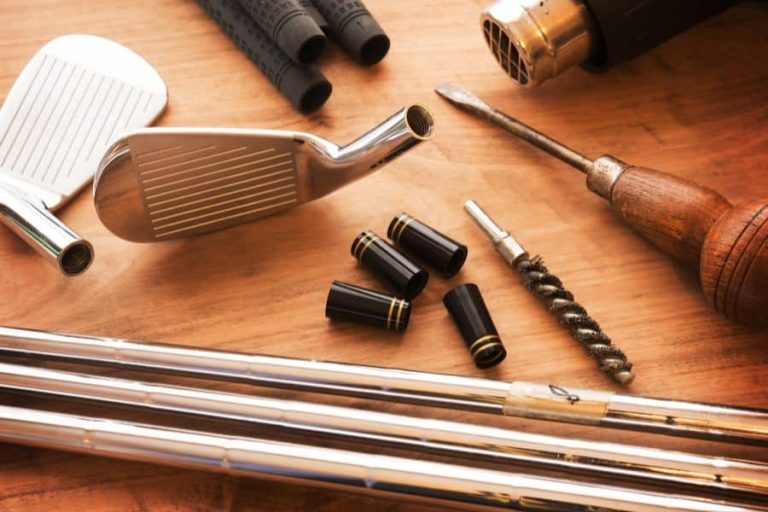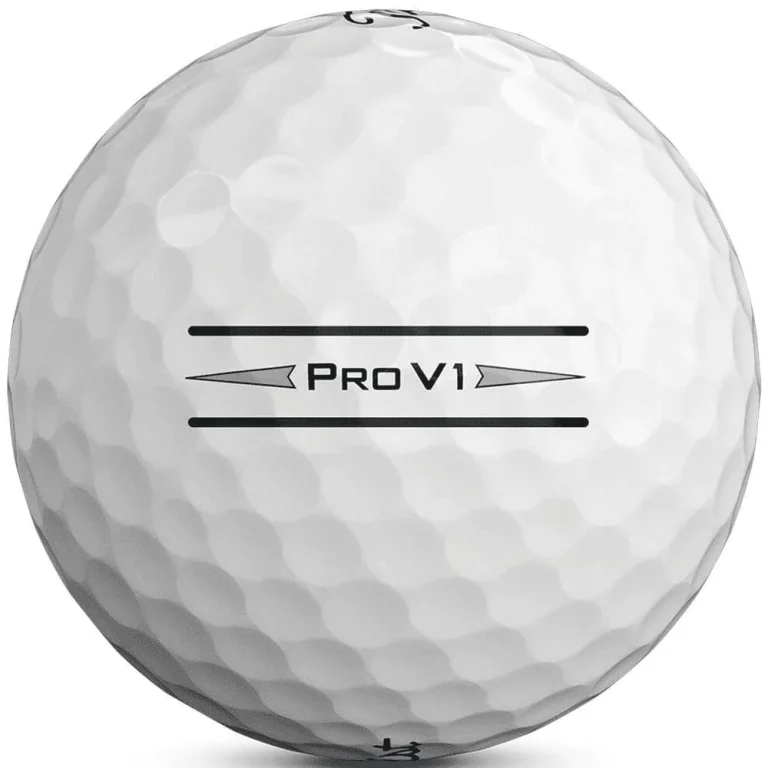how to clean golf clubs
.jpg)
Key Takeaways:
- Cleaning golf clubs is important for maintaining performance and longevity.
- Regular cleaning of golf clubs can improve their lifespan and prevent damage.
- Different types of golf clubs require specific cleaning techniques to ensure their proper maintenance.
Introduction
Keeping your golf clubs clean is not just about maintaining their appearance, it directly impacts your performance on the course. In this section, we will explore the importance of cleaning golf clubs for both performance and longevity.
We will also share insightful reference data that supports the significance of keeping your clubs in pristine condition. So, let’s dive in and discover the secrets behind sparkling clubs and improved game.
Importance of cleaning golf clubs for performance and longevity
Cleaning golf clubs is essential. It should be part of a maintenance routine, for optimal condition and performance.
Reference data confirms that regular cleaning enhances performance. Dirt and debris will be removed, meaning better contact with the ball. This leads to better control, spin and distance.
Cleaning also extends the life of clubs. Accumulated dirt and grime causes corrosion and rust, which can damage or degrade clubs. By eliminating contaminants, clubs will stay in good condition.
Finally, cleaning after each round ensures that clubs are ready for future use. Removing residue from a round of play demonstrates respect for the sport and prolongs the lifespan of clubs.
In conclusion, cleaning golf clubs regularly is key for performance enhancement and longevity. Incorporating proper cleaning techniques into a maintenance routine will allow players to enjoy the game, while protecting their investment.
Reference data supporting the significance of clean clubs
Clean clubs are essential for optimal performance and longevity in golf. Maintaining cleanliness helps with their functionality and ensures the best results on the course. Dirty clubs can lead to inaccurate, shorter shots and a less-than-pleasurable golfing experience. To emphasize this point, let’s look at some key reference data:
| Reference Data |
|---|
| Regular cleaning boosts club head durability |
| Clean club faces improve ball contact |
| Well-maintained grooves add spin and control |
| Prevents debris buildup that could hurt accuracy |
| Minimizes rust formation for longer club life |
This reference data emphasizes that clean clubs are beneficial for performance and longevity. Regular cleaning boosts club head durability and produces better ball contact. Grooves that are well-maintained will also add spin and control. Cleaning also prevents debris buildup that could negatively affect accuracy. Additionally, it minimizes rust formation, which helps increase the lifespan of clubs.
Different types of golf clubs require specific cleaning techniques. Irons should be submerged in warm soapy water and scrubbed with a brush or toothbrush. Metal woods require gentle cleaning with warm soapy water and a soft bristle brush. Wooden clubs should only be wiped with a damp cloth and dried right away. Shafts should be wiped with a damp cloth and vinegar can be used to remove rust. Lastly, grips can be wiped with a moist cloth then rinsed with water.
To ensure maximum performance and longevity, clubs should be put back in the golf bag after use and packed correctly. Storing them in a dry, temperature-controlled environment is also recommended. Checking them for rust is necessary. It is also important to use tools and materials specifically designed for cleaning golf clubs, to avoid unintentional damage. Following these tips can help keep the clubs in great shape and provide optimal performance on the course.
Methods for Cleaning Golf Clubs
Routine Club Head Cleaning, post-round cleaning, cleaning hybrids, fairway woods, and drivers, and putter maintenance – this section dives into diverse techniques for cleaning golf clubs, ensuring longevity and optimal performance. Eliminate grime, dirt, and residues to enhance your swing, accuracy, and overall golfing experience.
Routine Club Head Cleaning While on the Golf Course
For optimal performance and longevity of golf clubs, routine club head cleaning while playing is essential. Clean clubs lead to better contact with the ball, reducing negative impacts on shots. Plus, dirt and debris build-up is prevented. To stay on top of club head cleaning:
- Inspect them before and after each swing. Look for dirt, grass clippings, or debris.
- Wipe away surface dirt or moisture with a clean towel.
- Gently scrub away residue with a small brush, designed for cleaning golf clubs. Focus on hard-to-reach areas like the grooves.
- Dry off the club heads before putting them back in the bag.
- Repeat throughout the round, especially after shots where dirt contact is likely.
Cleaning club heads is a must. It boosts performance and extends their lifespan. Wiping away dirt and debris stops wear and tear from accumulating substances. Improved shot quality and longer lasting golf clubs – that’s what regular cleaning can do. So, give your clubs a spa day – they’ll thank you.
Cleaning Golf Clubs After a Round
Cleaning golf clubs after a round is essential. Data shows it’s key for performance and longevity. Follow these steps for clean clubs:
- Make a cleaning kit: soft-bristle brush, toothbrush, towel, solution, water.
- Pre-soak clubs in solution: bucket, sink of soapy water. Club heads should be submerged.
- Scrub with toothbrush or brush: grooves on clubface, remove dirt/grass stains.
- Rinse & dry: running water to remove soap, pat dry, store in golf bag.
Other tips for optimal performance: check for rust, use proper tools/materials, store in dry environment, pack correctly. With proper care, your clubs will perform best on the course. Clean hybrids, fairway woods, and drivers – even they deserve a spa day after a round.
Cleaning Hybrids, Fairway Woods, and Drivers
- Using a soft bristle brush, remove all debris from the club heads of hybrids, fairway woods and drivers.
- Then use a sponge to wipe them clean.
- Finally, rinse with water and dry carefully to avoid any moisture damage.
Cleaning these golf clubs is essential to maintain performance. Doing it regularly for hybrids, fairway woods and drivers will help their longevity. Be aware that each type requires special care.
For decades golfers have focused on cleaning their clubs. It helps them perform better on the course. By following the proper cleaning techniques for hybrids, fairway woods and drivers, golfers can boost their game and extend the life of the clubs.
Cleaning Putters
To clean putters properly, it is important to use certain techniques that help them last and perform their best. Cleaning them involves multiple steps and using the right tools and materials.
- Dip the putter head in a cleaning solution or soapy warm water.
- Gently brush the top of the head with a toothbrush or cleaning brush to remove dirt or residue.
- Rinse the head with clean water to take away any soap or cleaning solution left.
- Dry the putter head with a towel to prevent rusting or harm.
- Wipe the shaft of the putter with a damp cloth to take away any dirt or grime.
- Lastly, dry the putter grip and shaft if needed to keep them neat and working.
It is important to remember that properly cleaning and caring for putters can have a huge effect on their performance and lifespan.
To keep them well, don’t put wet or dirty putters back in the golf bag after you’re done. Instead, make sure they’re completely dry before storing them in a dry, temperature-controlled spot to stop rusting.
Check your putter regularly for any signs of tear or damage, such as loose grips or bends in the shaft, as these may affect your game. If needed, get professional help for repairs or replacements.
By doing these steps and having good habits, you can make sure that your putters stay in perfect condition and give the best results on the course.
Specific Cleaning Techniques for Different Types of Golf Clubs
Discover effective cleaning techniques for different types of golf clubs in this section. From cleaning iron club heads to maintaining metal woods, wooden clubs, club shafts, and grips, we’ll provide you with expert tips and tricks to keep your golf clubs in pristine condition. Say goodbye to dirt, grime, and debris that can affect your performance on the course as we guide you through the specific cleaning methods tailored for each type of club.
Cleaning Iron Club Heads
Clean your iron club heads for optimal performance and longevity. Removing dirt, debris, and residue helps with consistent ball contact and prevents damage. Plus, it keeps your clubs looking nice and shiny! Here’s a 6-step guide:
- Fill a basin with warm water and a bit of mild dish soap.
- Soak the clubs in the soapy water for a few minutes.
- Use a toothbrush or cleaning brush to scrub stubborn dirt and stains.
- Rinse off the club heads to remove all soap.
- Dry the clubs thoroughly with a towel.
- Inspect them to ensure they are clean before using or storing.
Different materials may need different cleaning techniques. Cast irons, for example, might rust more easily than stainless steel, so pay extra attention when drying. If deep scratches or marks can’t be removed with regular cleaning methods, consider professional help or replacing the clubs.
Regular cleaning will help your clubs perform better and last longer. Follow these techniques to make sure your irons stay in top condition for years!
Cleaning Metal Woods
Metal woods are an absolute must for a golfer’s kit, so it’s key to keep them clean and maintained for peak performance and durability. To successfully clean metal woods, these 6 steps are essential:
- Make a soapy water solution and use a soft-bristled brush.
- Delicately scrub the club heads, paying special attention to dirt accumulation or grime.
- Give extra care to the grooves on the club face – clean grooves are the secret to better ball control and shot accuracy.
- Rinse with clean water to get rid of the cleaning solution.
- Dry the club heads using a towel or letting them air dry.
- Inspect them once they’re dry and store safely.
It’s important to be gentle when cleaning metal woods to avoid damaging the finish or changing the characteristics. By following these steps after each golf session, you can keep your metal woods in tip-top shape for a long time. Keep in mind never to submerge the club in water or let it soak for too long, as this could cause damage or rusting.
Golfers can take advantage of the unique process of cleaning metal woods, guaranteeing their clubs stay in great condition and always perform optimally on the course. Regular maintenance and the right cleaning techniques will boost the lifespan of your metal woods while also optimizing their performance. So don’t forget to give your wooden clubs some TLC – it’ll make sure you stay swinging like a pro!
Cleaning Wooden Clubs
Wooden golf club heads need special cleaning methods to keep them lasting and performing well. Avoid harsh chemicals or rough materials when you clean them. Wipe them down with a damp cloth to get rid of dirt and grime on the surface. Once you’re done, dry them off with a towel. This stops moisture from getting in and ruining the wood.
If you store the clubs in a dry, controlled temperature environment, it’ll help maintain them. Traditionally, golf clubs were made out of wood before metal became popular. Cleaning them was key to keeping them good for a long time.
By caring for these vintage clubs and using the right cleaning techniques, they’ll last and give great performance on the golf course.
Cleaning Golf Club Shafts
Clean your golf club shafts!
It ensures performance and longevity. Wipe with a damp cloth to remove dirt. Rub vinegar onto rust-affected areas. Dry thoroughly with a towel. Polish with a metal polish for a shiny finish. Don’t forget to clean your grips, too. Follow these steps for top performance on the course.
One golfer learned this lesson the hard way. After not cleaning his shafts, he noticed his performance slipping. But with proper cleaning, his clubs looked and felt better, plus his shots improved! Clean regularly to keep your game sharp and your grip firm.
Cleaning Golf Club Grips
- Wipe the grips with a damp cloth to remove any surface dirt.
- Make a soapy solution with a mild soap and warm water.
- Use the cloth to apply the solution to the grips, and gently scrub off any stubborn grime.
- Rinse off all soap with clean water.
- Towel dry the grips, and remove excess moisture.
- Let the grips air dry completely.
In addition, you should:
- Store clubs in a dry place, away from humidity and extreme temperatures.
- Avoid leaving your clubs in direct sunlight for long.
- If you notice any signs of wear, such as cracks or smooth areas, replace grips ASAP.
Follow these tips to keep your golf club grips in excellent condition and performing the best on the course!
Additional Tips for Properly Cleaning and Maintaining Golf Clubs
To ensure golf clubs last and perform their best, proper cleaning and maintenance is essential. Here are some more tips:
- Clean clubheads: Use a soft-bristled brush or toothbrush to get rid of dirt and debris. Focus on the grooves, where dirt can reduce spin and accuracy.
- Use a mild detergent: Fill a bucket with warm water and some mild dish soap. Soak the clubheads and scrub gently. Rinse off with clean water.
- Dry and polish clubs: Dry the clubheads and shafts with a towel or rag. Remove excess moisture to avoid rust. Chrome or metal polish can restore shine and protect the clubheads.
Also, inspect the grips for wear regularly and replace if needed. Store the clubs in a cool, dry place to prevent damage and extend their lifespan. With these extra tips, golf clubs will stay in top condition and perform their best.
Conclusion
Cleaning and maintaining golf clubs is essential. You must remove dirt, debris, and grass from the clubheads, grips, and shafts. Use a brush or toothpick to clean the grooves of the clubface. Scrub the clubheads and shafts with a mixture of warm water and mild soap using a soft cloth or brush. Clean the grips with a damp cloth or specialized grip cleaner. Thoroughly dry the clubs afterwards to prevent damage or rust.
In addition to cleaning, proper storage is important too. Keep clubs in a dry, clean place away from extreme temperatures or humidity. Use headcovers for the clubheads to protect them. Don’t put the clubs in a bag or trunk with heavy objects.
By regularly cleaning and maintaining golf clubs, golfers can ensure they stay in good condition and perform at their best. The proper cleaning techniques and correct storage will contribute to their performance and durability. This results in better shots and an enjoyable golfing experience.
Some Facts About How To Clean Golf Clubs:
- ✅ Cleaning golf clubs is important to preserve their performance and longevity. (Source: Team Research)
- ✅ Different types of golf clubs require different cleaning methods, so it’s important to know the type you have. (Source: Team Research)
- ✅ Iron club heads can be cleaned by submerging them in warm water with dishwashing liquid, scrubbing with a toothbrush, and applying steel or chrome polish. (Source: Team Research)
- ✅ Wooden clubs should not be dipped in water or scrubbed with a brush; they should be wiped down with a damp cloth. (Source: Team Research)
- ✅ Golf club grips should be periodically cleaned with a damp cloth and dried to prevent accumulation of sweat and oils. (Source: Team Research)
FAQs about How To Clean Golf Clubs
How often should I clean my golf clubs?
It is recommended to clean your golf clubs after every round or every two to three rounds, depending on personal preference and playing conditions.
What is the best way to clean iron club heads?
Fill a bucket with warm water and a small amount of dishwashing liquid or soap. Submerge the iron club heads for 5-10 minutes, then use a toothbrush or brush to scrub off dirt. Rinse and dry the club heads before applying steel or chrome polish.
Can I use a power washer to clean my golf clubs?
While a power washer can provide a thorough cleaning, it should be used sparingly as it may damage the clubface. It is important to be cautious and avoid injury while using a power washer.
How should I clean golf club grips?
To clean golf club grips, wipe them with a damp cloth and rinse with water. Dry the grips thoroughly before using them again. It is important not to use anything abrasive or harsh on the grips, as it can damage their special coating.
Can I clean wooden golf club heads with water?
No, wooden golf club heads should not be dipped in water or scrubbed with a brush. Instead, use a damp cloth to wipe down the club heads and dry them with a towel.
What should I use to clean rust off golf club shafts?
To clean rust off golf club shafts, apply vinegar with a cloth and wipe off any residue. Dry the shafts thoroughly. For steel shafts, you can also use steel wool to remove rust spots.




